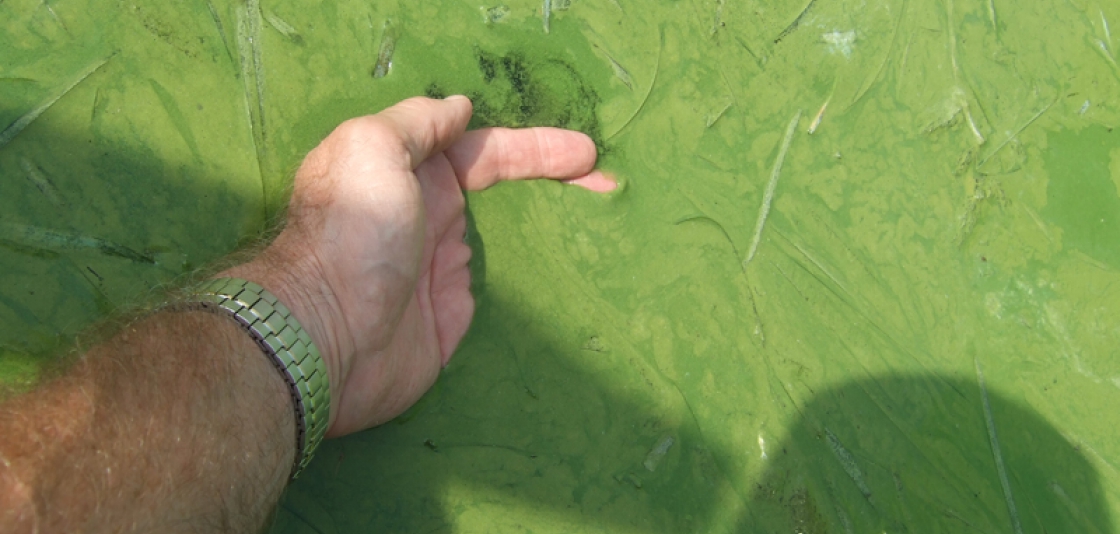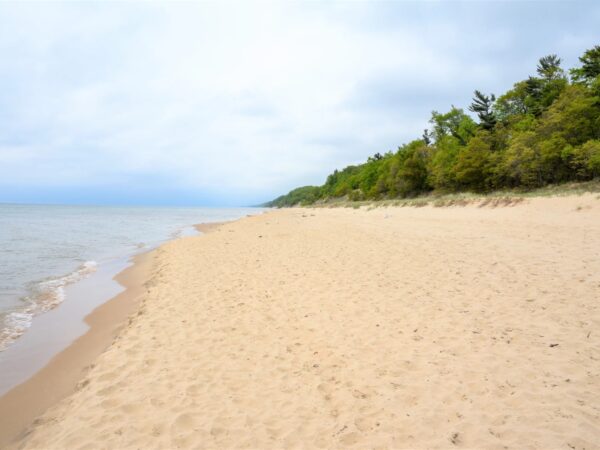
No daily deadlines. No manufactured news conferences. Plenty of time to ask questions. And a little bit of kayaking and fishing.
During the last week of June, I was part of a group of journalists from around the region who traveled with the Institute for Journalism and Natural Resources through Ohio, Michigan and Indiana. We talked with communities and experts on water quality issues in the Great Lakes region.
Ultimately, this fellowship will make my work as news director of Great Lakes Now that much better, starting with this series of snapshots where I’ll introduce you to some of the people we met who are working on and particularly affected by some of the biggest water quality issues. They’ll tell you why their work and experiences matter to all of us in the Great Lakes region and beyond, and I’ll help you learn more.
Where We Were: Northern Ohio
The Issue: Nutrient runoff from farms and how that runoff exacerbates harmful algal bloom growth
The Overview and What You Need to Know:
One major water quality issue that Lake Erie struggles with is nutrient runoff from the wide expanse of farms hugging its shorelines and draining into it. Since pinpointing the issue, farmers and researchers have attempted to test and implement solutions to the amount of phosphorus entering the lakes.
Best Management Practices (BMPs) is a general term that covers a range of options that farmers can adopt that should help the situation such as cover crops and avoiding winter application of nutrients on the fields. For many of the practices, choosing to adopt them is voluntary.
“Ohio’s a farm state,” said Ken Kilbert, professor of environmental and water law at the University of Toledo. “It has, like most farm states, been reluctant to regulate farms.”
Ohio State University looked into the likelihood of farmers to adopt these practices, comparing the percentage of farmers willing to adopt BMPs against the percentage who actually do it.
For BMPs that are mandatory such as avoiding manure application in the winter and when there’s prior warning of a large rainfall—with exceptions—the adoption levels were more than 80 percent and nearly identical to the percent who intended to do it.
“Those regulations (that are mandatory) were low-hanging fruit,” said Robyn Wilson, associate professor of risk analysis and decision science at Ohio State University, who was involved in the university’s study on farmers and BMPs. “They weren’t asking a lot of people. They were asking like ‘Let’s not put fertilizer down when the ground’s frozen,’ which most people aren’t doing anyway.”
For voluntary BMPs like cover crops and subsurface placement of nutrients, roughly 60 to 70 percent of farmers reported intending to adopt the practices, but only about 30 percent of those farmers followed through.
One program looking to change that is the Blanchard River Demonstration Farms Network, a partnership between U.S. Department of Agriculture Natural Resources Conservation Services and the Ohio Farm Bureau Federation. The partnership works with farms, such as Kurt Farms in Dunkirk, Ohio, to apply some of these BMPs so the efficacy of them can be studied more as well as so farmers around them can see how these practices work.
For the 30 to 40 percent of farmers who intended to adopt the BMPs but didn’t, the study found that the barriers in the way were cost, timing and weather.
“It’s just too expensive given their profit margins, or they don’t have enough time, or they don’t have access to the equipment at all,” Wilson said.
The solution isn’t promoting BMPs more. If that 30 to 40 percent of farmers actually adopted the BMPs, it would make a significant difference, according to Wilson. Instead, Wilson suggested turning funding to subsidizing equipment or creating co-ops where people could share equipment.
“Once you level the playing field,” she said, “then you could require it of everybody.”
More Great Lakes Now News and Information on this Topic:
Animal Culprit: Study Points to Animal Farms as Growing Contributors to Lake Erie Algae
Featured Image: Harmful Lake Erie algal bloom, Photo by michigan.gov




